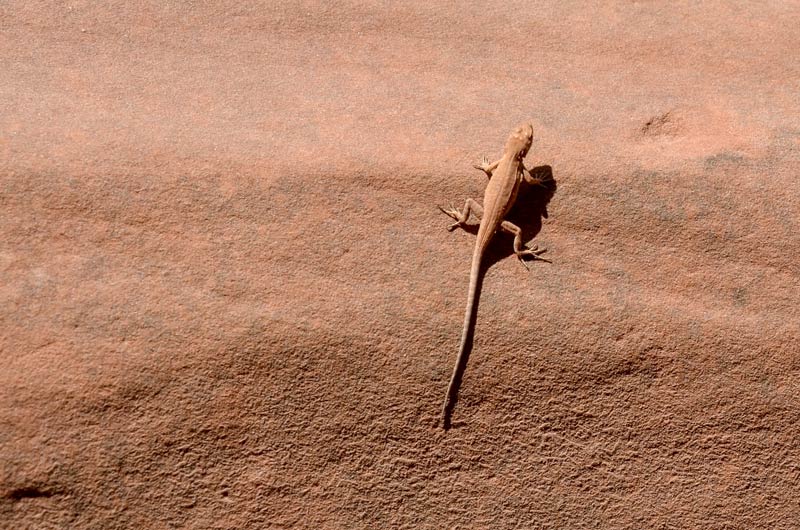
Listen to the audio version
On July 16th, the United States Fish and Wildlife Service (USFWS) announced their 12-month plan to determine whether to list the Dunes Sagebrush Lizard (Sceloporus Arenicolus) under the Endangered Species Act (ESA) is warranted. Early findings of threats to them and their habitats related to oil and gas, frac sand mining, climate change, and inadequate existing regulatory mechanisms may warrant species protection.
History of Dunes Sagebrush Lizard Protection
This case is not the first time Dunes Sagebrush Lizard has been up for protection. The United States Fish and Wildlife Service first proposed listing the lizard under the ESA in 2010. Still, they then declined to list the species in 2012 after a regional conservation plan was approved. The conservation plan allowed industries like oil and gas to voluntarily pay a mitigation fee in return for coverage from prosecution under the ESA if the lizard ever received formal protection and the industry activity impacted the species. The conservation plan was deemed ineffective, and it was formally rescinded in December of 2018.
In May 2018, environmental groups had once again petitioned USFWS to consider federal protection for the lizard. In October 2019, those groups sued USFWS for delaying a response to the petition. This week’s announcements result from the May settlement of that lawsuit. The USFWS agreed to decide whether it would formally consider the environmental groups’ petition by the end of June.
New Dunes Sagebrush Lizard Conservation Measures
This week, when the USFWS announced they are again considering federal protection for the lizard, USFWS announced their intention to prepare another conservation plan. This plan will affect oil and gas exploration and development, sand mining, renewable energy development and operations, pipeline construction, agricultural activities, general construction activities, and species research.
Like its predecessor, the newly proposed conservation plan, the technical name of which is “Candidate Conservation Agreement with Assurances,” allows participants to pay a mitigation fee for impacts on species. If the species eventually receives federal protection, they can continue with their current activities with no threat of prosecution under the ESA if they implement certain conservation practices.
For most of the last decade, this lizard has been at the center of political debate between environmental groups, and resolution is a long way out. Public comment for listing the species is likely to fuel the decade-long debate, adding layers of complexity to a final decision. We can expect impacts on many public and private interests during this process, with a history of private agreements between landowners drastically swaying previous rulings.
How this can Impact Land Developers
Sagebrush Lizard Habitat
Occupying roughly 650 square miles of Mescalero Sands, the ideal habitat for this species is the dues of southwestern Texas and southeastern New Mexico. The Mescalero sands are an off-roading area managed by the Bureau of Land Management where the spiny lizard faces high threats to its existence.
The Sagebrush Lizard, formally the Sand Dune Lizard, makes its home in the hollowed-out depressions of these sand dunes. These homes are almost always near a Shinnery Oak tree. Actions such as frac sand mining in the Permian Basin have impacted the lizard population drastically. Developers of the Permian Basin would benefit from learning about this species as its home is likely to affect developments in these areas.
Permits Required for Dunes Sagebrush Lizard Protection
Incidental Take Permit
If authorized, this permit allows for incidental take of a protected species. Public comments regarding expanding actions covered by this permit have been closed. Decisions over the extent of this permit and the protection of the species are ongoing.
Incidental take refers to the unintentional harm, capture, collection, or killing of a protected species.
Section 10(a)(1)(A) Permit
Should the species be listed, this section of the Endangered Species Act allows the interaction with and take of the species for scientific and conservation purposes.
2022 Update on the Dunes Sagebrush Lizard
Federal Conservation Plan for the Dunes Sagebrush Lizard
This species is still under review for addition to the endangered species list, and no specific plan or actions exist for managing the species. The species does not have an established critical habitat, as its listing is in limbo. The timeline for public comment on the listing of this species ended on March 11, 2022. The USFWS will consider comments from the public and Tribal, State, Federal, and Local governments for listing this species.
Texas Conservation Plan for the Dunes Sagebrush Lizard
The Texas conservation plan proposed in 2012 by Susan Combs, the former Texas comptroller, was merely a scapegoat for political scrutiny over endangered species protections. The plan lacked any actions capable of protecting the species and was seen as irrelevant. Following this, the state protections for the lizard became void, leaving regulation at the federal level. A more effective state-led effort has not been introduced. The Center for Biological Diversity has noted how this ineffective plan, followed by a lack of action, is a severe threat to the species.
